A Joy So Real
A shocking heart attack ended Crow Thorsen’s season, but one of D3’s most charismatic athletes is finding a new purpose in a future he nearly lost.
A special thank you to Eugene Soh for his outstanding sports photography. Had he not so generously shared his work with us, we would not have been able to do justice to this story. We are deeply grateful.
Something's not right here
This story began on the morning of December 27, 2024. Emory’s Crow Thorsen—the reigning Division III national champion in the men’s 400 I.M.—was back home in Athens, GA, training with his former swim club, the Athens Bulldog Swim Club (ABSC), over winter break.
CT: It was morning, and I'm in the pool, and my first thought was, man, I really need more sleep. Something's not right here. No more going to bed at 2 a.m., staying up texting a girl.
Crow laughs now at the memory, amused that he initially blamed his sluggishness on the typical habits of a 22-year-old.
CT: We're on round number two of sprints. And I'm next to my brother. And I’m joking to myself—something's wrong because he's beating me.
His brother, McKee Thorsen, is also his teammate at Emory. Their younger sister, an NCAA swimmer at Davidson, was also in the pool that morning. Struggling to keep up with the set, and now finding it harder to breathe, Crow Thorsen climbed out of the water.
Crow, you can't die
CT: And there's my coach (Harvey Humphries, longtime UGA assistant coach, now head coach of ABSC). And I say, ‘Harvey, I don’t know what’s wrong. My chest hurts. My breathing is weird. I just feel off.’
Then Crow threw up. Humphries told him to sit down and checked his pulse.
CT: I sit down in a chair, and my brother and my sister have realized something’s going wrong. And so they both hop out...and as they come towards me I’m almost about to pass out.
Then these thoughts.
CT: At that point, I was thinking, ‘wow, I’m going to die.’ And I had a split-second thought of…'that really sucks.’ And then I looked up, and I saw both of my siblings. And I thought, ‘Crow, you can’t die.’
A zebra
There is a common adage: When you hear hoofbeats, think horses, not zebras. Consider the most likely explanations first rather than jumping to exotic conclusions.
But, zebras do exist.
CT: The whole time, Harvey is on the phone with my parents saying, ‘We need to get him to the emergency room. I think he's having a heart attack.’
For an elite NCAA swimmer with chest discomfort, shortness of breath, and nausea, the usual culprits would be dehydration, a panic attack, a rib stress-fracture, or too much pre-workout—not a heart attack. But Coach Humphries saw something others might have missed.
Many coaches know to look for cardiac emergencies, but they’re usually watching for ventricular fibrillation (VFib)—a near-instant cardiac arrest where the heart quivers instead of pumping blood—not heart attacks.1 VFib victims don’t clutch their chest or struggle to breathe—they collapse, pulseless, and need CPR and a defibrillator within minutes to survive.2
The fact that Crow Thorsen was still conscious made a cardiac issue seem unlikely. But unlikely things happen—he was having a heart attack, a condition most commonly associated with people who are three times his age, and who are not particularly fit, and who smoke and have other factors like diabetes. Genetic abnormalities can play a role, but none had ever been identified in Crow.
Later, some of Crow’s friends speculated that swimming may have saved his life—that being in peak condition might have mitigated damage to his heart. But Crow says it was Coach Humphries, a heart attack survivor himself, who saved him, by recognizing a most unlikely development and insisting Crow go to the hospital.
The Widowmaker
Crow Thorsen’s father drove him to the emergency room, and during the ride, Crow Thorsen felt well enough to question whether he even needed to go. But once there, an echocardiogram revealed that the lower tip of his heart wasn’t squeezing as forcefully as the rest. There was a blockage in his left anterior descending (LAD) artery.
The doctors remarked that he was their "interesting case" for the day—a fit, lean college athlete with a heart attack.
Then they wheeled him into surgery. There, they inserted a thin tube through the radial artery in his wrist, guided it to the blocked coronary artery, inflated a balloon to restore blood flow, and placed a stent to keep the artery open.
Crow learned there is a special name for a blockage in the LAD artery. It is called a ‘Widowmaker.’ Blockages in this artery, if not treated immediately, are highly fatal.3
After surgery, he was transferred to the ICU. Nurses there cautioned him that the unit was filled with very sick patients, advising him not to be alarmed if he heard a commotion. Crow Thorsen understood the message: he was entering a unit from which some people never emerged.4 In the blur of events, he remembers feeling concern for the others in the unit, afraid for their well-being. He sensed his prospects were very different than those around him.
And he recalls at this time hearing from the staff that he could probably return to swimming in about a month, pending tests.
They didn't say no, but they definitely didn't say yes
In the coming days, Crow faced seemingly endless tests and evaluations. His mother drove him to every appointment. In those early meetings, he found comfort in letting his parents take the lead, nodding along as they asked the hard questions while he processed.
Doctors initially proposed three possible causes for his heart attack: genetics, spontaneous coronary artery dissection (SCAD), or plaque buildup. But each test only deepened the mystery. A CT scan ruled out plaque, and genetic tests came back negative. That left SCAD…until a specialist confirmed it wasn’t the cause either.
CT: It's great that we're crossing off all these bad things, but we've crossed off so many things that we're at the point where we don't know what it is.
The uncertainty didn’t help his timeline. Three months out of the water became the new minimum. That was when he realized his senior season was over. And he now noticed he was being given no assurance he’d ever return to competitive swimming.
CT: Swimming is the reason why I go to bed on time at night. It's the reason why I eat three meals a day. Um, I mean, it is quite literally the reason I wake up in the morning, because I have to go to practice.
Would he ever swim again?
CT: They didn't say no, but they definitely didn't say yes.
An ironic celebration
In mid-January, the Emory team was on their winter training trip and Crow Thorsen was recovering at his parents’ house in Athens. It was a tough time for him, being separated from the team he loves.
CT: I remember this very vividly. I'm laying in my bed at home and I'm thinking, I know I'm going to swim fast again. For some reason I had this image of winning somewhere, somehow, and throwing up a heart [a hand gesture] as celebration, an ironic celebration.
One morning soon after the team returned to Atlanta, his friends piled into cars and made the trip to Athens to spend time with Crow.
CT: That was really special. It was also, I could tell really special for my parents. The meal was brunch…French toast. And my parents went all out for it.
The house was full of his friends, laughing, eating, enjoying their time with a teammate they loved.
At one point Crow got up from the table and went into the kitchen to grab something. The kitchen was empty except for his parents, who were standing there together, crying.
D3SO: Crow, how do you understand what was happening in that moment?
CT: …I think they were caught up in the emotion of hearing that happy, excited talk, me with my friends. Um, and that they got to experience that again, I think, was really emotional.
The thorn
Returning to school felt like a victory in itself. Crow Thorsen’s physical limitations were strict—he could walk, but his backpack had to be light. Still, he found small ways to reclaim his independence. He mischievously takes the stairs two at a time. Most importantly, he had made it back to campus on time and resumed classes with everyone else. After everything, that alone felt huge.
Being unable to swim has changed how he sees himself. In class, when a professor asked if there were any athletes, he hesitated—was he still an athlete? Then there were the odd, physical reminders, like noticing his arm hair had grown back after years of chlorine stripping it away—a small but poignant sign of how much had changed. But just as unsettling was how others now see him. At lunch, he sat with teammates discussing a tiebreaker idea for dual meets—each team picking three swimmers for three randomly selected events. Crow instinctively thought, I would be one of them. As the reigning 400 I.M. national champion, his versatility made him an obvious choice.
CT: The thorn was that as my teammates talked about this, I wasn't in the conversation. My name wasn't coming up because I wasn't swimming anymore. That was a tough moment.
So closely removed
He is back on deck for Emory, but now as a coach instead of a swimmer.5 It is a mixed bag. Every time he steps onto the pool deck, it is a painful reminder of what he has lost, but he cares deeply about the Emory team so leaving mid-season felt impossible.
Jon Howell, Emory’s head coach, has empowered Crow, giving him real responsibility on deck.
CT: I f*cking love it.
And apparently, coaching is something he is good at.
CT: It's weird—the perspective I have. I was swimming just a couple of months ago, so I’m still so closely removed... I’ve gotten lots of compliments on my coaching. Hearing that I gave the best stroke advice of the entire season to one of my teammates—that meant a lot. Which is a funny thing to say, coaching my own teammates.
At UAA Championships, Crow’s frustration re-emerged—the line between being a coach and a competitor not yet so clearly drawn. Early in the meet, during the men’s 500 Free final, freshman Ben Pritchard was pulling-off an upset against NYU’s Connor Vincent, and for the first 75 yards, Crow could barely focus, consumed by the ache of not competing. Then, something shifted. His instincts took over—he found himself on the bulkhead, jumping, shouting for his teammate, fully immersed in the moment.
CT: After Ben’s race, I ran to meet him behind the blocks in our equipment room. We jumped up and down in circles in celebration, and I kept screaming, "You did it!"…My heart rate got a little too high, probably.
Crow now wears a FitBit to track his heart rate, but when the emotion takes over, he’s not thinking about his watch.
At Nationals, he will be there as a coach, traveling with the team. He will even have a roommate who is still competing, a reality that gives him pause. He admitted there would be moments when it will ‘feel like hell’—watching, but not racing. But the alternatives—in all its plausible forms—would have been worse.6 And his excitement is irrepressible when he thinks about being on deck next week, ‘cheering for my best friends and celebrating their success and their swims. I’m excited for more jumping up and down in circles in celebration with my teammates in Greensboro. ’
A weird little dance
On the question of whether he will swim again, Crow is aware of the balance between hope and realism.
CT: It’s a weird little dance I’m doing where I’m trying not to get hopeful.
The NCAA medical redshirt application is in motion, and Emory’s athletic department believes he has a strong case. But the biggest hurdle remains: his doctor’s approval. He just met with Emory sports cardiologist Dr. Jonathan Kim.
CT: Dr. Kim says that he thinks a fifth year could be possible. I have started cardio physical therapy and have a stress test scheduled for June.
This will include more imaging and other tests to check for scarring of his heart muscle. Again, swimming competitively has not been ruled out, but he is far from being cleared to return to action.
In the meantime, he keeps navigating this uncertain rhythm, caught between wanting to believe and knowing he might have to let go.
The energy I bring is the energy I get back
This is a big week for Crow Thorsen. He is preparing to coach his team at Division III Nationals in Greensboro. And he was just offered a Teach For America (TFA) fellowship, and he must choose whether to accept it by this Thursday, when he is at Nationals.7
D3SO: Why TFA?
CT: I love working with kids. Because the energy I bring is the energy I get back. And their joy is so real. It’s fun. I think that coaching and tutoring is where, besides the pool, it’s where I’ve felt purpose in life.
There was a famous and tragic series of VFib deaths in the late 1980s and early 1990s, involving three high-profile basketball players—Len Bias, Hank Gathers, and Reggie Lewis:
Len Bias (1986): The Maryland star collapsed on the floor of a College Park dorm after heavy cocaine use, which disrupted his heart’s electrical system.
Hank Gathers (1990): Diagnosed with hypertrophic cardiomyopathy (HCM), a condition that thickens the heart muscle and disrupts the heart’s rhythm, the Loyola Marymount star collapsed mid-game and was rushed to the hospital, where he was pronounced dead.
Reggie Lewis (1993): Cleared for light workouts after a misdiagnosed minor heart condition, the Boston Celtics shooting-guard suffered sudden cardiac arrest at practice.
Bias, Gathers, and Lewis took different paths to the same catastrophic outcome: VFib—a chaotic, uncoordinated heart rhythm incapable of circulating blood.
Heart attacks present very differently than VFib.
When someone has a heart attack, they look like hell—sweating, vomiting, panting, moaning, writhing in pain.
If you want to see what VFib looks like, just Google "Damar Hamlin Collapses After Hit vs Bengals." That’s VFib. A world-class athlete sprints across the field, tackles a wide receiver, pops up, adjusts his helmet—then collapses like a rag doll.
Cut-off flow in the LAD, and you cut off the heart’s left ventricle. The heart muscle quickly begins to die, leading to (you guessed it) VFib.
Crow Thorsen has a habit of focusing on others, even in moments of crisis. Back on the pool deck, as he teetered on the edge of unconsciousness, he believed he fought to stay awake because he saw his brother and sister in front of him—he couldn't bear for them to witness him collapse. Later, during the exhaustive testing to uncover the cause of his sudden heart attack, the genetic screening caused him the most anxiety—not for himself, but because a bad result could mean his family members were also at risk.
And back in the hospital for more testing (this time at Emory), he found himself reaching out to another patient in the same room.
CT: Here’s a guy with heart problems, I’m a guy with heart problems, so I said Hi.
The man was struggling, clearly unwell. As his condition worsened, a nurse quietly pulled Crow into another room.
CT: Three minutes later, alarms, everyone in the scan room is running past me, back to the room where the man is, and they are buzzing for doctors, and five, ten minutes later, the nurse came back to check me out, and I said ‘Is he going to be ok?’ I left the hospital without an answer.
Being on deck means passing through the locker room. That means occasionally hearing teammates grumble about being tired or not wanting to swim.
CT: What I would give to be there, to be able to swim and be tired…that concept of not wanting to swim is so foreign to me.
Coaching had always been in the back of his mind—even before his heart attack, when he worked with younger swimmers at a club team. Now, the idea carries more weight.
A Teach For America (TFA) Fellowship is a two-year commitment where participants teach in under-resourced public or charter schools across the U.S. to help address educational inequity. Fellows receive intensive summer training before placement in high-need urban or rural areas, where they work full-time as salaried teachers. After completing the fellowship, alumni are encouraged to become advocates for changes in education policy.

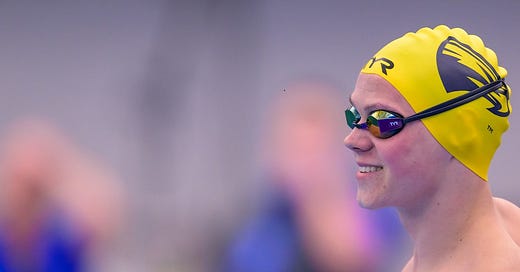


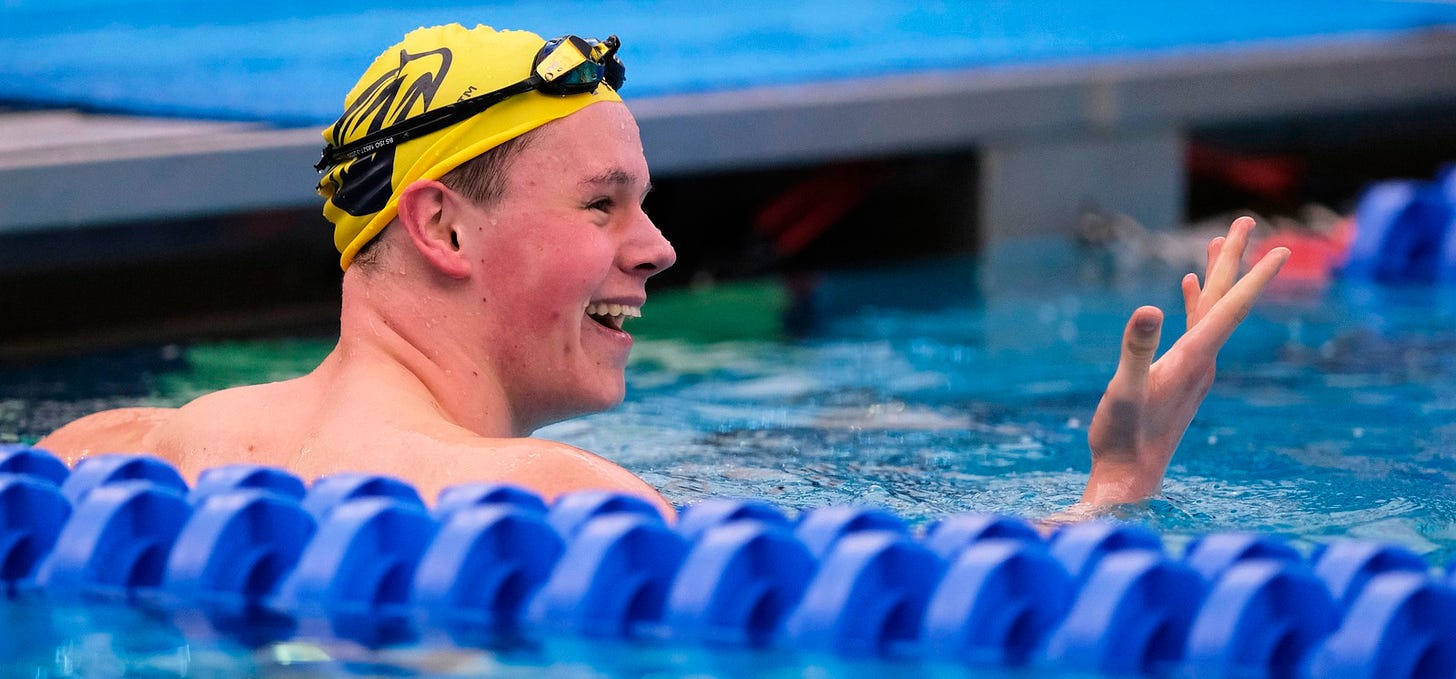
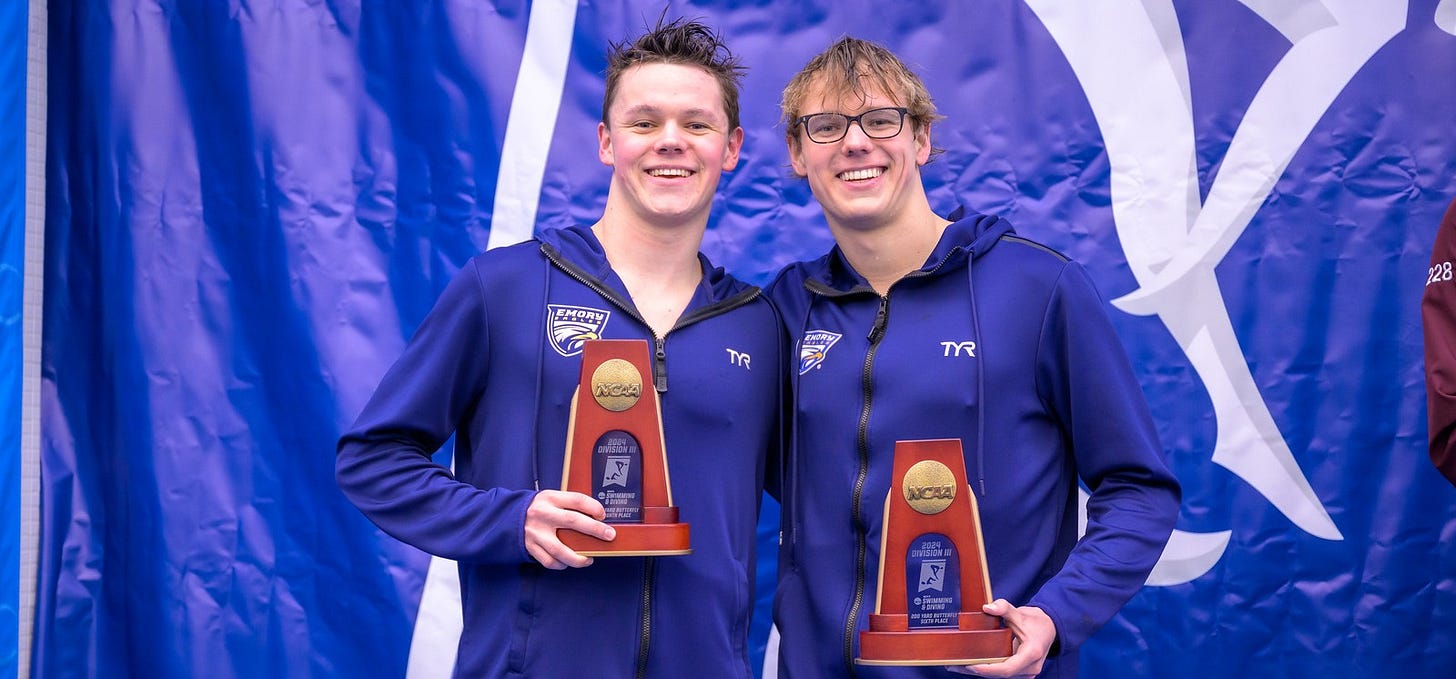
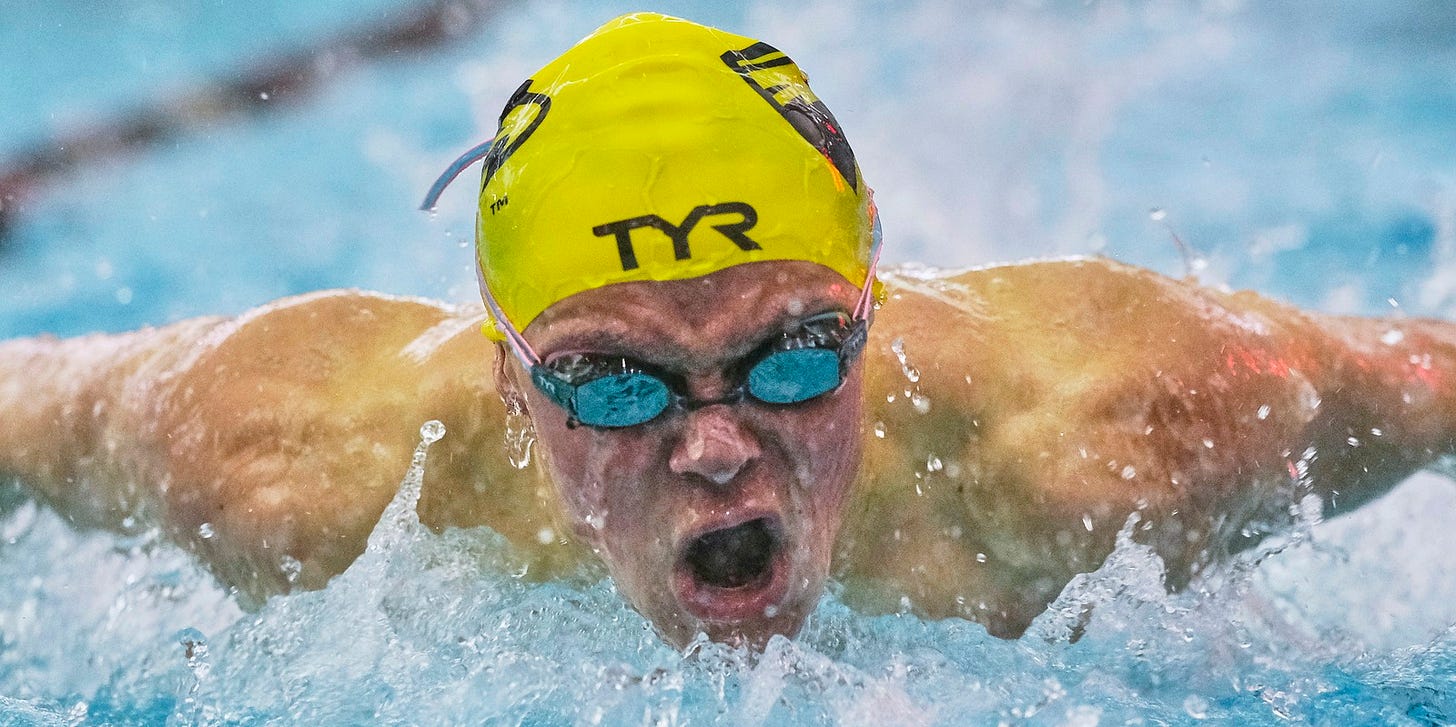
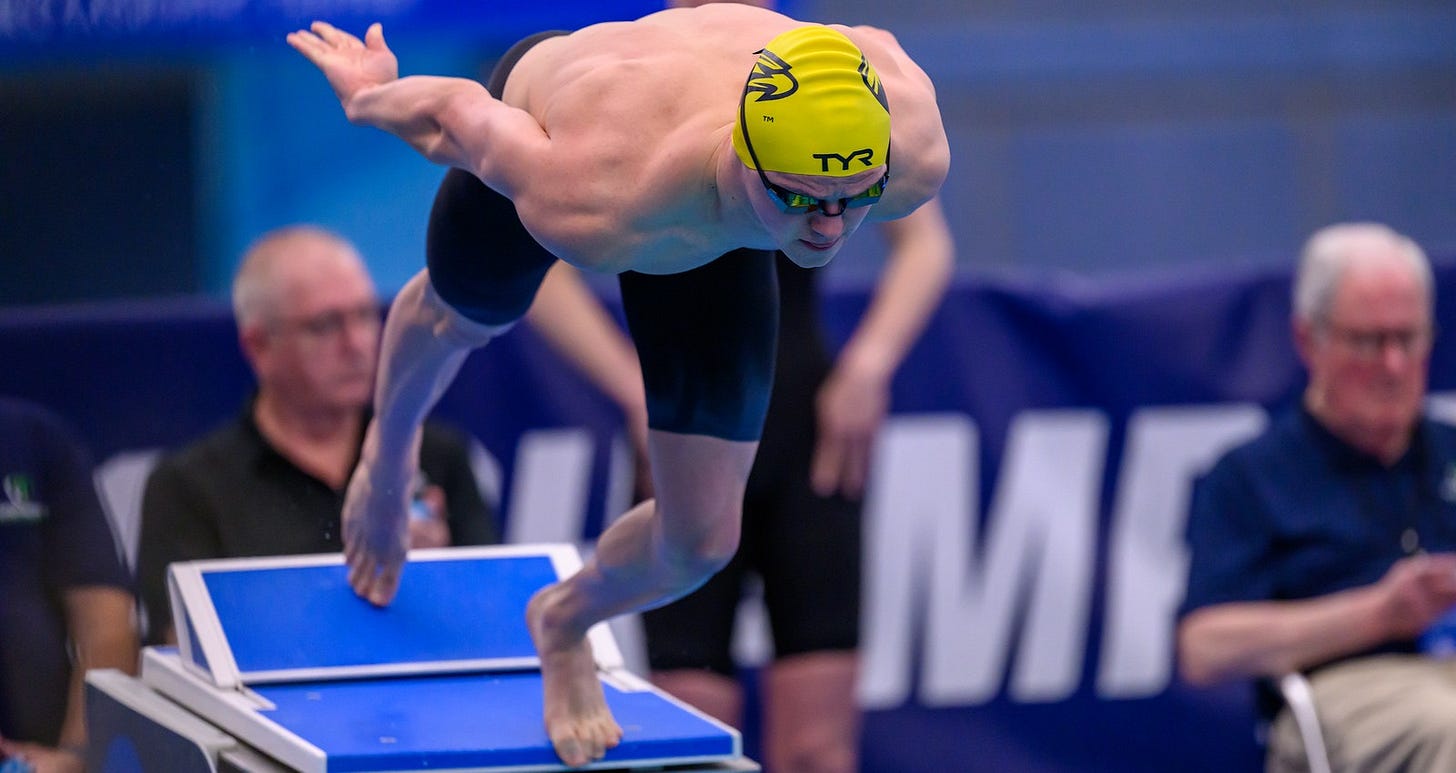
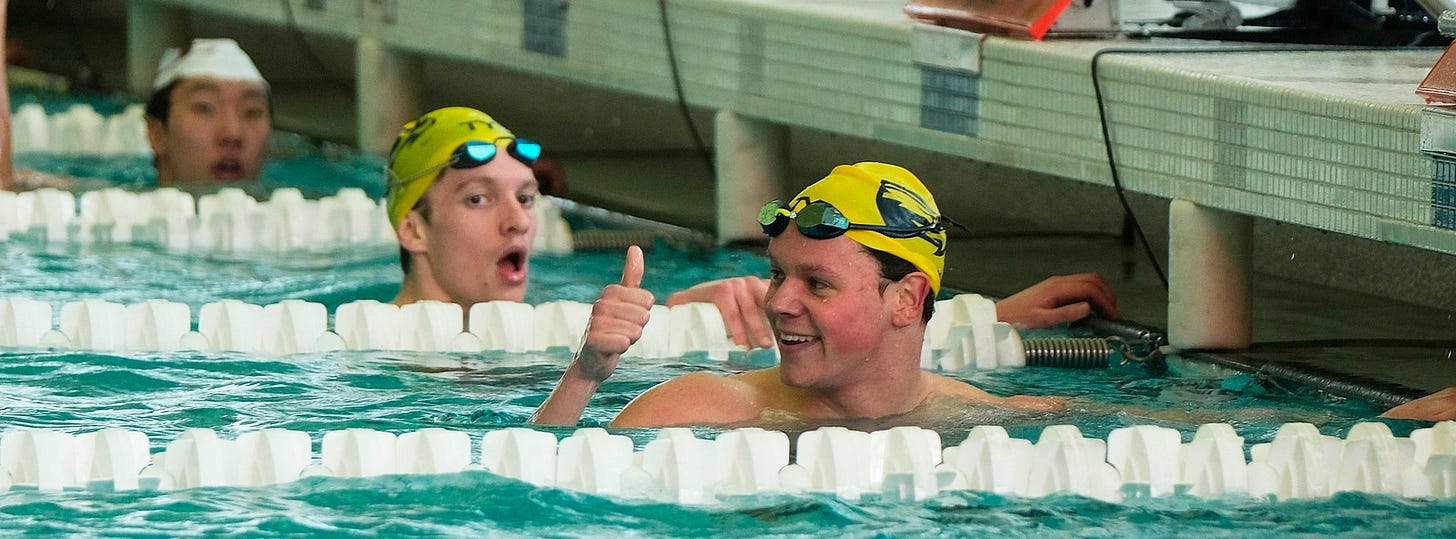
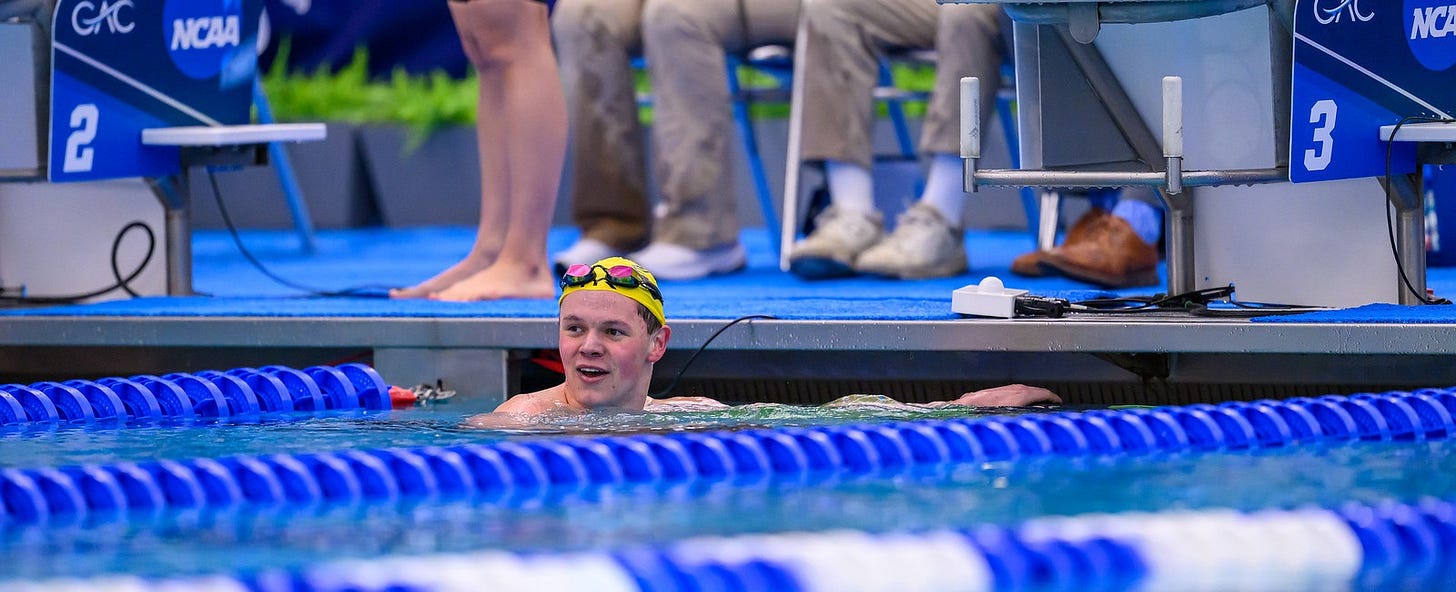
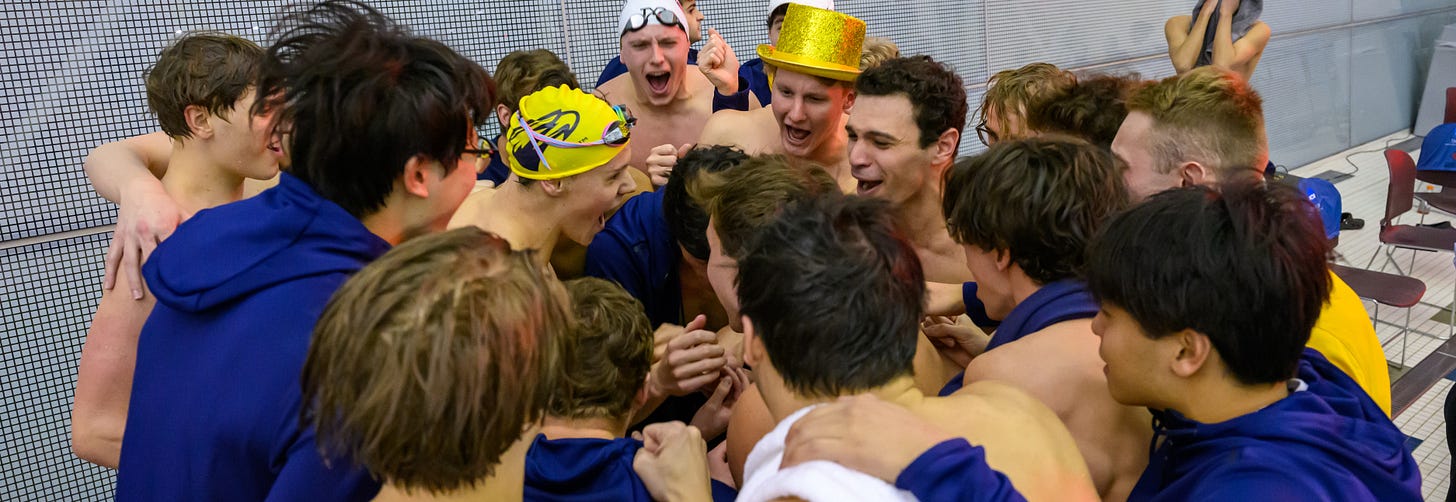
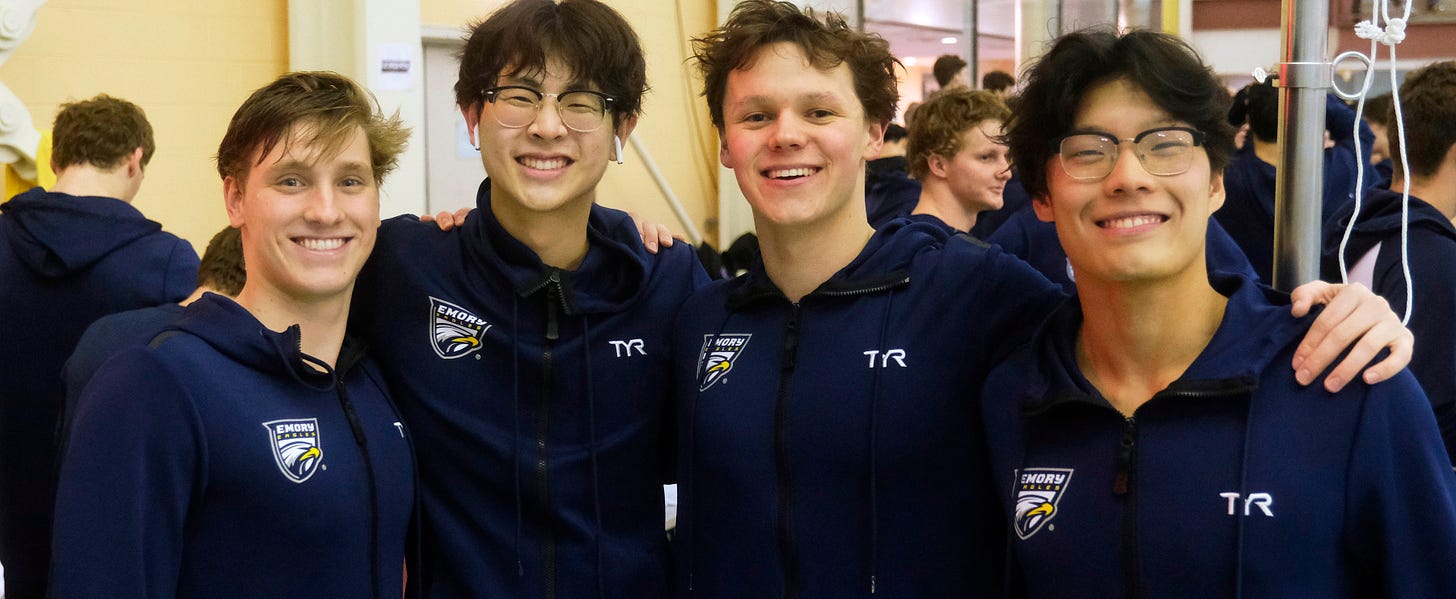
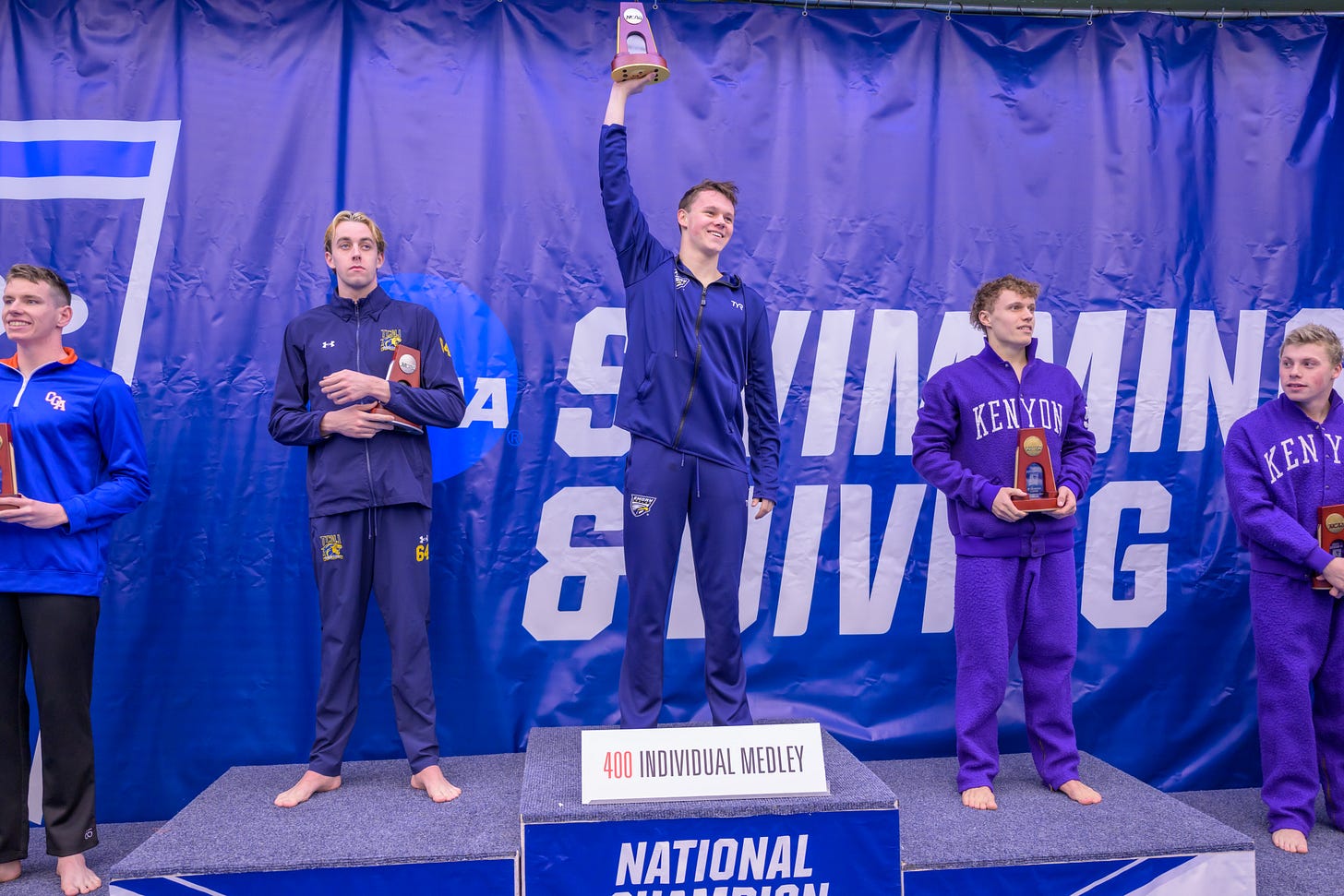

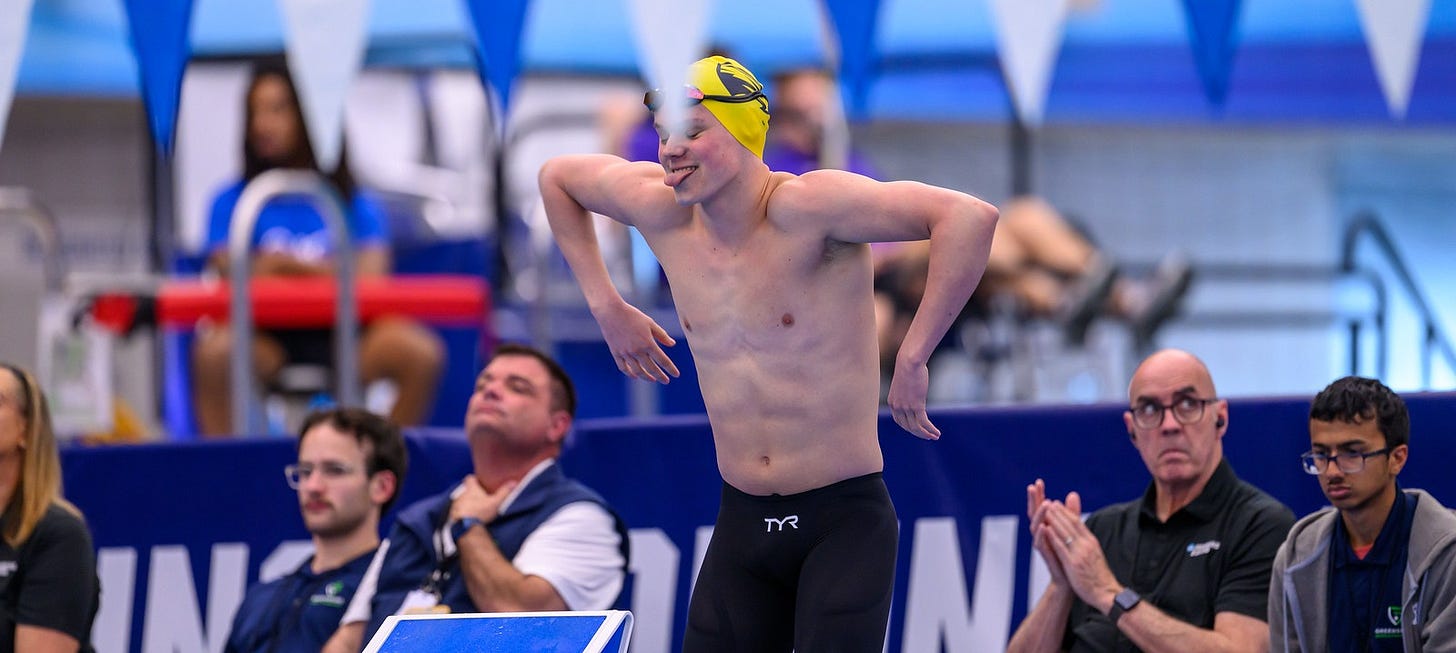
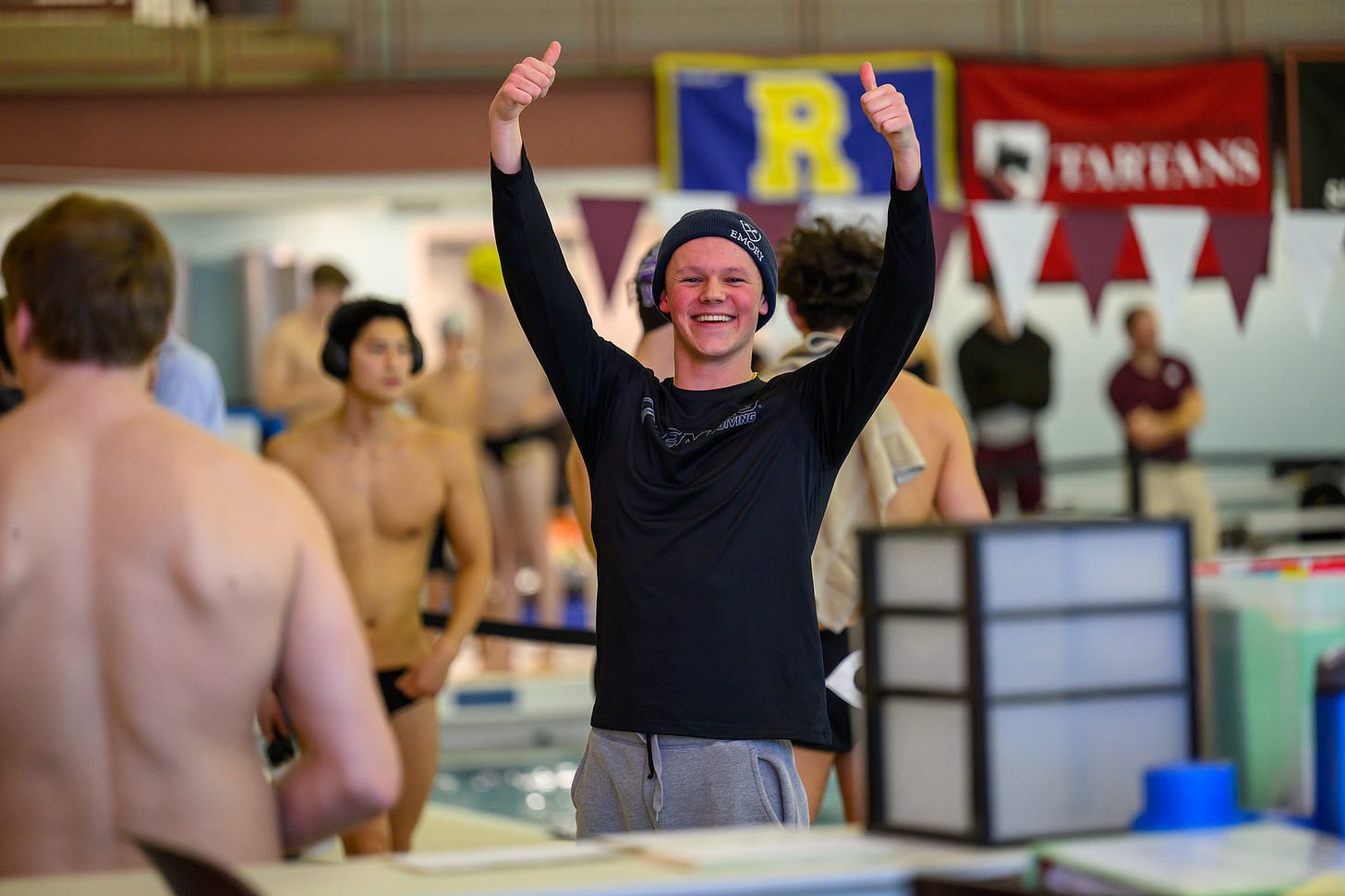

Such an excellent article. Crow is a wonderful captain, teammate, friend, and person. You captured that so well in this piece and I’m proud of him for sharing his story. I have been so impressed, but not at all surprised, by his unwavering commitment to the team and his teammates. Through all of this, my mind continues to return to the MLK Jr. quote “the ultimate measure of a man is not where he stands in moments of comfort and convenience, but where he stands at times of challenge and controversy.” In this time of challenge Crow has shown the wonderful person he is. Thank you for covering his story.
Crow is seriously one of the nicest people I’ve ever had the pleasure of meeting. I can’t count how many times he’s gone head-to-head against our best swimmers and beat them, but it’s impossible to be upset about him winning. He’s everything you could ever want in a competitor and I’m excited to see where swimming takes him next.